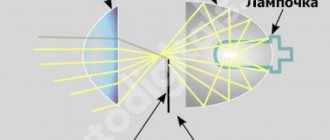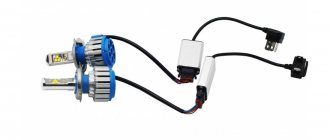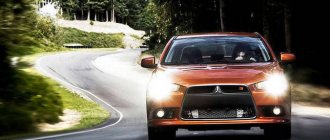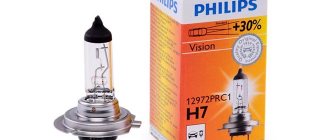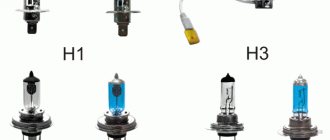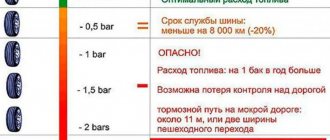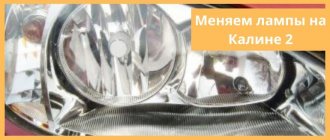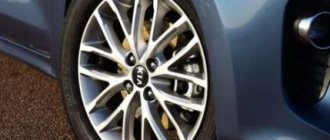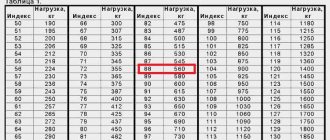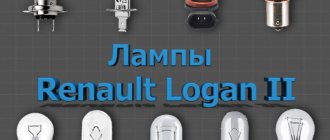The main task of fog lights (FFL) is to provide adequate illumination for vehicle movement in poor visibility conditions. However, standard halogen optics are not always able to cope with this task, which is why many car owners decide to replace them with LED equipment. Since the legality of installing such lighting devices today remains in question, it is necessary to figure out whether it is possible to install LED lamps in fog lights and whether there is a specific penalty for this.
Laws governing the issue
Having decided to install LED lamps in PTF, car owners simply do not think about the legality of their actions, which leads to the expected consequences - administrative liability. If the car is equipped with standard halogens, then its headlights are not designed for LED bulbs, so their installation will be considered illegal.
The arbitrary replacement of halogen lamps with LED lamps violates paragraph 3 of Article 1. The latter lists faults in the presence of which it is prohibited to operate the car:
In fact, there is no specific ban on installing LED lamps in fog lights - this item is also absent from the technical passport of the vehicle. Based on this, many drivers begin to prove that they are right, but the traffic police inspector can withdraw their license in accordance with Part 3 of Article 12.5 of the Administrative Code, which states the following:
The penalty for installing LED lamps instead of halogen lamps in PTF was deprivation of rights for one year and was valid until 2019. Today, the incorrect use of lighting devices in headlights is regulated by Resolution of the Plenum of the Supreme Court of the Russian Federation No. 20:
According to the information provided, deprivation of rights is possible only if the light bulbs do not meet the manufacturer’s requirements and have an inappropriate glow and operating mode. Since the light remains white when the correct LED bulbs are installed in the fog lights, the judge cannot revoke the driver's license, but can impose a fine.
The main mistake of many drivers
With regard to PTF, most drivers make a grave mistake - using optics for purposes other than their intended purpose. In addition, things can simply reach the point of madness: drivers equip their vehicles with such optics in large quantities. It is not uncommon to find sedans with such lights (4 pieces or more) on their roofs at any time.
Meanwhile, the traffic rules clearly state that turning on the PTF is allowed only during the dark period of the day and in conditions of insufficient visibility (fog, smoke). Some drivers turn them on instead of low beams, which is also a gross violation of traffic rules.
Therefore, we should not forget that PTF is just additional optics, although some owners manage to convert fog lights to LEDs. Of course, it is impossible to completely abandon them, since under some circumstances they are very helpful. Their main advantage from a design point of view is their special reflector and diffuser. There is nothing like this in any other optics yet.
Paradoxically, it is the fog lamps that consume the most energy, producing a powerful luminous flux that is significantly brighter than low beams. Modern traffic regulations do not contain any instructions regarding the color range of the PTF luminous flux. Because of this, various manufacturers are conducting their own experiments.
What is the fine?
In a specific situation, the type of car lamp does not match the type of reflectors, which is a serious violation and is accompanied by a fine of 500 rubles. There are two ways to avoid a repetition of the situation - return halogen lamps to their place or legalize LED lamps. In the second case, you will need to obtain a certificate of compliance of the car with installed LEDs in the headlights with safety requirements, and then re-register the vehicle with the traffic police. A prerequisite is to purchase headlights that are compatible with diode lamps.
What kind of light bulbs can be installed in fog lights?
You can install LED lamps in foglights only in one case - if the PTFs are designed to use such a light source. Modern fog lights for cars are divided into two types, marked B and F3. The design features of the former do not allow the installation of LED equipment - today this is prohibited by law. But the F3 fog lights are suitable for LED lamps; their design allows for interaction with sources of this type. This is stated in paragraph 5.7.2 of UNECE Regulation 19.
Since LED fog lamps are labeled similarly to OEM halogen bulbs (HR, HC, HCR), forensic experts may recognize the legality of using diodes instead of halogen bulbs. However, this “technique” does not work in all cases.
New cars are equipped with a second type of reflector (labeled F3), and often the manufacturer himself installs LEDs in the fog lights, which solves the problem of legality. Owners of outdated car models can purchase special headlights equipped with LED lamps - this will help them forget about fines and troubles with the traffic police.
With angel eyes
The so-called PTFs with angel eyes are popular among modern car enthusiasts - these are lensed headlights that can operate in one of three modes:
- LED ring around the round perimeter of the headlight;
- the central part of the headlight, equipped with a lens;
- and the ring-rim of the headlight, and the LEDs in its central part.
In addition to exceptional aesthetic appeal, LED headlights of this type provide good illumination due to the lens used in their design.
Is it possible to install LED fog lights?
When using diode lamps in standard fog lamps, the light source is not placed in the place provided for by the design of the reflector, which is why the direction of the light beam is formed incorrectly. From a legal point of view, a good option would be to purchase and install universal LED headlights with LED emitters.
In this case, the design of the reflector initially provides for the installation of an LED chip, which means that all requirements (light power, beam direction, etc.) are met automatically. The only condition is that the purchased LED fog lights must be certified and approved for use.
The main disadvantage of universal PTFs with diodes is the inability to replace LED modules. In other words, if the LED fails, then the only option to solve the problem is to purchase a new headlight, which will require serious financial investment.
Advantages and disadvantages
Experts and users note the advantages and disadvantages of headlights in comparison with LED light sources:
- Long service life - up to 50 thousand hours. They are reliably protected from mechanical damage, dust, dirt and moisture entering their interior;
- Due to their low power consumption, LED headlights do not place a large load on the car's alternator;
- During operation, the color of the luminous flux of such headlights practically does not change; LED headlights emit bright white light for good illumination;
- They can be easily installed on any convenient place on the car body: bumper, roof, body kit elements.
- if at least one LED fails, the entire PTF will have to be replaced; installed on the external elements of the car body, such headlights can be easily stolen;
- high cost when compared with other types of lighting fixtures.
Is it a good solution to install LED lamps instead of halogen ones?
Standard halogens are noticeably inferior to LED bulbs, which are capable of producing bright light with minimal energy consumption. High-quality diodes in PTF last more than 5 years, while the most modern halogen car lamp shines for no more than 4000 hours. Despite the cheap cost of halogen lights, they have to be replaced much more often than LED equipment.
The famous LED lamps for cars win in many respects, so in this case the choice is obvious. To finally decide to install LEDs in your car’s fog lights, you should finally make sure of the legality of their use.
- The diode lamps installed in the PTF are distinguished by a bright white/yellow glow, which complies with the rules of the Technical Regulations of the Vehicle. If you do not install blue, purple or red car lamps, then there should be no problems with the traffic police.
- The presence of headlight markings (HR, HCR) allows you to install an LED bulb in it - the reflector provides for the installation of an LED lamp from the factory. In this case, you will need to select the appropriate size of the base and replace the product yourself.
- After installing LEDs in the fog lights, the design of the car remains the same, because the light source does not change, and the light flux is within acceptable limits.
For each brand of vehicle, special models of fog lights are produced that are compatible with LED bulbs. In order for LEDs to work correctly in PTF, you should not focus on cheap products - choose models in the middle price category. This applies to the choice of both fog lights and LED car lamps.
The answers came later
Long before drivers began installing H11 LEDs in the foglights of their cars, almost by the middle of the 20th century, the theory of pn junctions in relation to semiconductors was created. Based on this, in 1947 the first transistor was invented, which to this day has remained an unchanged element of radio engineering. The glow occurred when charged particles crossed a boundary consisting of two different semiconductor elements. And it is precisely the place where these two crystals come into contact that glows, which ultimately forms a kind of sandwich.
The whole difficulty lay in the production of semiconductors of the required structure. And this obstacle could not be overcome for a long time. Only since 1955 have research been successful. The first diode was produced by General Electric, although not everything is so simple here, since similar developments were also carried out in different countries of the world. But these are not yet the same H11 LEDs in the foglights of modern cars that are common today.
A revolutionary breakthrough was made by Nichia in 1995, demonstrating an ultra-bright LED, which was a full-fledged light source. From that time on, the development of semiconductor lighting devices began. And as many experts note, new light sources may completely replace traditional analogues in the near future.
What lamps can be installed in fog lights?
Fog lights have a sophisticated optical system design. Since PTFs are used in conditions of insufficient visibility, the requirements for lamps will be specific - the luminous flux emitted by fog lamps must meet the following characteristics:
- increased light intensity and neutral color temperature;
- the actual power of a car light bulb should be no more than 60 W - this ensures the formation of a light flux with a wide spectrum of radiation;
- The dispersion angle in the vertical plane is 5°, in the horizontal plane – up to 60°.
All three types of light bulbs (halogen, xenon and LED) are suitable for installation in PTF - there are no specific restrictions on size or operating principle. Most of all, the listed characteristics correspond to LED car lamps - after installation, the diodes in the fog lights “give out” a bright white beam of light, very reminiscent of daylight. In addition, the light flux is practically not scattered in the air.
Reason for harsh punishment
Many car owners believe that the most serious offense is driving while intoxicated. This is a misconception; blindness is an equally serious offense.
Let's look at an example:
- if the driver’s blood alcohol level is less than 0.8 g/l, this has virtually no effect on driving and the number of accidents;
- When alcohol levels exceed this limit, the chance of getting into an accident increases. A drunk driver's reaction is weakened; it takes him longer to react to the situation that has unfolded on the road.
In fact, a sober driver reacts in a second, a drunk driver needs 2 or more to avoid an accident.
The average driver needs at least 3 seconds to restore visibility after being blinded. In the dark, it takes more than 8 seconds to fully adapt. Approximately 10% of drivers will not be able to see normally for 60-120 seconds. That is, a bright headlight makes all oncoming drivers “drunk” for a short time, this is enough for an accident!
If you do not understand the danger posed by such blindness. Either you don’t care at all, then you will become a pedestrian. This will save you and many drivers from loss of health, life and other problems.
How to choose lamps for fog lights
Standard auto lamps for PTF do not always meet quality criteria - they may simply not provide sufficient visibility in bad weather conditions, which is why road safety will be low. If you decide to improve the lighting of your fog lights by installing LED bulbs, you should familiarize yourself with the features of their choice.
- Base size . Traditionally, car lamps are made for fog lights with the following base markings: H1, H3, H7, H8, H10, H11. The appropriate option is selected depending on the manufacturer and model range of the car.
- Colorful temperature. Despite the variety of shades (blue, cyan, pink), only white light bulbs are installed in fog lights. It is better to test the product before purchasing so that you do not have to return it later.
- Brand . When buying auto lamps for PTF, you should give preference to well-known brands such as Philips and Osram, for example. It is not recommended to choose products from Chinese manufacturers, as there is a risk of purchasing low-quality products.
LED bulbs for PTF cannot be too cheap - if this is the case, then this means that this is a fake. On the Russian market, the cost of branded auto lamps for fog lights starts from 8,500 rubles. Fortunately, there are many analogues that are not inferior in technical characteristics to products from European brands, and at the same time are cheaper.
Another important point
As mentioned above, the luminous flux can be of different shades:
- white;
- blue;
- red;
- yellow.
Here you should think not only about personal preferences, but also about other road users. For example, H3 LEDs in blue and white fog lights will blind oncoming drivers, which is not good for anyone, since not only personal safety depends on it. Therefore, it is better to purchase optics with a yellow tint.

